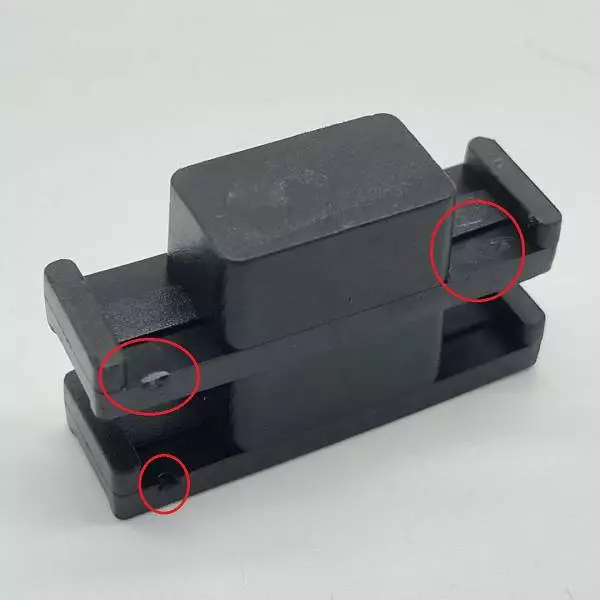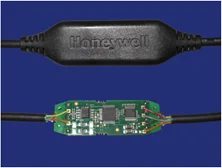Niederdruckgießen, was ist es, wie und wo wird es eingesetzt, das Verfahren

Niederdruckgießen, was ist es, wie und wo wird es verwendet, das Verfahren Niederdruckgießen ist eine Technik, die wir alle in unserem täglichen Leben sehen und antreffen, auch wenn es Ihnen vielleicht nicht bewusst ist, Niederdruckgießen ist ein wesentlicher Bestandteil vieler Geräte und Anlagen, die Sie täglich benutzen. Es geht stillschweigend seiner Arbeit nach und Sie denken wahrscheinlich nicht weiter darüber nach. Hier bei QL-Custom haben wir viele Jahre Erfahrung mit dem Niederdruckgießen. Deshalb möchten wir Ihnen in diesem Artikel einige der wichtigsten Punkte zu diesem Verfahren erläutern. Hier eine kurze Antwort zum Mitnehmen für Sie, dann tauchen wir tiefer in das Verfahren und die Vorteile des Niederdruckgießens ein, nicht nur für die Anwendungen, sondern auch für die Umwelt. Was ist Niederdruckgießen? Niederdruckgießen ist eine Technik zum Schutz und zur Kapselung von Bauteilen, die anfällig für Schäden, Feuchtigkeit oder andere äußere Einflüsse sind. Typisch sind Anwendungen wie Verdrahtung und Leiterplatten. Unter Verwendung von Materialien, die als Hotmelts bekannt sind, werden Polymere verwendet, um die Komponenten mit Hilfe von Spezialmaschinen zu umschließen. Polyamidwerkstoffe auf Dimersäurebasis, die oft als "Hotmelts" bezeichnet werden, sind Thermoplaste, die bei Erhitzung auf bestimmte Temperaturen biegsam und verformbar werden, so dass sie um wertvolle Anschlüsse und Verbindungen herum verwendet werden können. Warum es Low Pressure Molding genannt wird Low Pressure Molding (oder LPM) ist, wie der Name schon sagt, die Anwendung von Verfahren und Techniken mit niedrigerem Druck, die dort eingesetzt werden, wo Bauteile unter dem normalen Druck oder der extremen Hitze leiden, die sonst bei Standard-Druckgussanwendungen verwendet werden. Um es noch einmal zu wiederholen: Es gibt zwei Hauptgründe, warum eine Anwendung den Einsatz des Niederdruckgießens erfordern kann. Verformbarkeit Ein wichtiger Faktor ist die Notwendigkeit, dass die verwendeten Thermoplaste zähflüssiger sind. Durch die Viskosität kann das eingespritzte Material...
Mehr lesen "Niederdruckgießen

Niederdruckgießen Geschichte des Niederdruckgießens 1972: Frankreich IBM zum ersten Mal. 1987 :Eruope Automotive beginnt mit dem Spritzgießen für die Elektronikindustrie 1993 :Verwendung für die französische Automobilkabelbaumindustrie 1995 :Breite Verwendung für die Automobilindustrie und Ausweitung auf die Elektronikindustrie 2000 :Verwendung für Leiterplatten, Sensorik und Steckverbinder. Nach 2000: Breites Einsatzspektrum für weltweite Industrien. Was ist Niedertemperatur-Spritzgießen Das Niederdruck-Spritzgießverfahren ist ein Verpackungsverfahren, bei dem ein sehr niedriger Einspritzdruck verwendet wird, um das Vergussmaterial in die Form zu spritzen und schnell zu verfestigen. Um Isolierung, Temperaturbeständigkeit, Schlagfestigkeit, Feuchtigkeitsreduzierung, Wasserdichtigkeit, Staub- und Chemikalienbeständigkeit zu erreichen. Gilt für: Leiterplatten, elektronische Stecker, Kabelbäume, Batterien, Schalter, LED-Leuchten, Spulen, etc. Vorteile Kurzer Injektionszyklus Harzmaterialien Umweltschutz Die Verbindung muss nicht gemischt werden Thermoplaste benötigen keine Verfestigungszeit Hohe Zuverlässigkeit Einfaches Formdesign Vorteil von umspritzten Teilen Wasserdicht Isolierung Schlagfestigkeit Temperaturbeständigkeit Chemische Beständigkeit Schrott Keine Umweltbelastung Eigenschaften der PA PA-Materialien Elemente Kunststoffharzelemente Polyamidoamine auf Dimersäurebasis sind das Ergebnis von Polyamidoaminen auf Dimersäurebasis sind das Ergebnis der Polykondensation zwischen Diaminen und dibasischen Säuren. Woher kommt das Niederdruckkunstharz? Dimersäure, die aus gewöhnlichen landwirtschaftlichen Produkten extrahiert wird Rizinusöl Maisöl Leinöl Erdnussöl Pflanzenöl Tallöl Welche Farbe haben die Niederdruckmaterialien Das Material ist körnig, im Allgemeinen schwarz oder bernsteinfarben Kann in anderen Farben hergestellt werden Wir bieten Materialien einschließlich Unterdruck1-200psi(0~60kg) Formtemperatur160° C~230° C Schützen Sie die Eigenschaft von IC und Komponenten Charactor PA/PO/PET/PUR QL-Custom ausreichender Vorrat QL-Custom Professionelle Beratung Envirmetal Gute Isoliereigenschaften, flammhemmende Eigenschaften und Korrosionsbeständigkeit Wie wählt man die Materialien für das Niederdruckgießen aus? ...
Mehr lesen "